| Listing 1 - 10 of 15 | << page >> |
Sort by
|
Book
ISBN: 2713213401 Year: 1999 Publisher: Paris Editions de l'Ecole des Hautes Etudes en Sciences Sociales
Abstract | Keywords | Export | Availability | Bookmark
 Loading...
Loading...Choose an application
- Reference Manager
- EndNote
- RefWorks (Direct export to RefWorks)
#SBIB:39A5 --- Kunst, habitat, materiële cultuur en ontspanning --- Art africain --- Musées --- Collectionneurs et collections
Multi
ISBN: 909012862X Year: 1999 Publisher: Nijmegen NICI
Abstract | Keywords | Export | Availability | Bookmark
 Loading...
Loading...Choose an application
- Reference Manager
- EndNote
- RefWorks (Direct export to RefWorks)
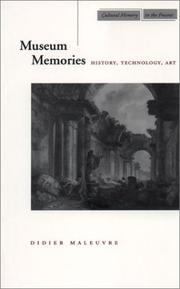
ISBN: 0804732027 0804736049 Year: 1999 Publisher: Stanford Stanford university press
Abstract | Keywords | Export | Availability | Bookmark
 Loading...
Loading...Choose an application
- Reference Manager
- EndNote
- RefWorks (Direct export to RefWorks)
#SBIB:39A5 --- Kunst, habitat, materiële cultuur en ontspanning --- Culture --- Historical museums --- Historiography --- History --- Museums --- Historiography. --- History. --- Philosophy. --- Public institutions --- Cabinets of curiosities --- History, Modern --- Cultural sociology --- Sociology of culture --- Civilization --- Popular culture --- Philosophy --- Social aspects --- History museums
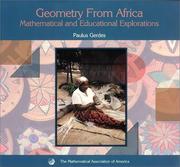
ISBN: 0883857154 Year: 1999 Publisher: Washington Mathematical association of America
Abstract | Keywords | Export | Availability | Bookmark
 Loading...
Loading...Choose an application
- Reference Manager
- EndNote
- RefWorks (Direct export to RefWorks)
: ill.
Didactics of mathematics --- Africa --- Wiskunde --- Didactiek --- Afrika --- Art in mathematics education --- Decoration and ornament --- Geometry --- #SBIB:39A5 --- #SBIB:39A73 --- Art, Decorative --- Decorative art --- Decorative design --- Design, Decorative --- Nature in ornament --- Ornament --- Painting, Decorative --- Art --- Decorative arts --- Arts and crafts movement --- Mathematics --- Study and teaching --- Kunst, habitat, materiële cultuur en ontspanning --- Etnografie: Afrika --- Decoration and ornament, Primitive
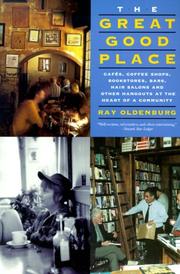
ISBN: 9781569246818 1569246815 Year: 1999 Publisher: Cambridge, MA : Da Capo Press,
Abstract | Keywords | Export | Availability | Bookmark
 Loading...
Loading...Choose an application
- Reference Manager
- EndNote
- RefWorks (Direct export to RefWorks)
The Great Good Place argues that "third places" - where people can gather, put aside the concerns of work and home, and hang out simply for the pleasures of good company and lively conversation - are the heart of a community's social vitality and the grassroots of democracy.
City and town life --- Public spaces --- Leisure --- #SBIB:39A4 --- #SBIB:39A5 --- #SBIB:39A74 --- Public places --- Social areas --- Urban public spaces --- Urban spaces --- Cities and towns --- Toegepaste antropologie --- Kunst, habitat, materiële cultuur en ontspanning --- Etnografie: Amerika --- vrijetijdsbesteding --- recreation --- Sociology of leisure --- United States --- 711.61 --- 711 --- Publieke ruimte --- Ruimtelijke ordening --- Third space --- Derde ruimte --- Openbare ruimte --- United States of America
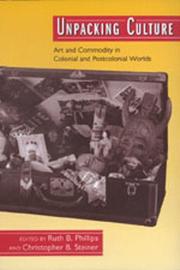
ISBN: 0520207971 0520207963 Year: 1999 Publisher: Berkeley Universtity of California Press
Abstract | Keywords | Export | Availability | Bookmark
 Loading...
Loading...Choose an application
- Reference Manager
- EndNote
- RefWorks (Direct export to RefWorks)
Art and society. --- Art --- Tourism and art. --- Economic aspects. --- #SBIB:39A5 --- #SBIB:316.7C200 --- Kunst, habitat, materiële cultuur en ontspanning --- Sociologie van de cultuuruitingen: algemeen --- Tourism --- Tourisme --- Art et société --- Aspect économique --- Art and society --- Tourism and art --- Art and tourism --- Tourist trade and art --- Art and sociology --- Society and art --- Sociology and art --- Economic aspects --- Social aspects
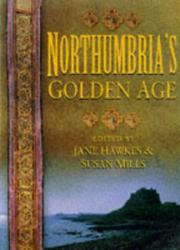
ISBN: 0750916850 9780750916851 Year: 1999 Publisher: Stroud, England : Sutton,
Abstract | Keywords | Export | Availability | Bookmark
 Loading...
Loading...Choose an application
- Reference Manager
- EndNote
- RefWorks (Direct export to RefWorks)
Northumbria enjoyed a Golden Age during the 7th and 8th centuries. This volume contains contributions from leading scholars which present new insights into this period based on the latest documentary research and archaeological discoveries.
Anglo-Saxons --- Civilization, Anglo-Saxon. --- Excavations (Archaeology) --- Archaeology, Medieval --- Civilisation anglo-saxonne --- Fouilles (Archéologie) --- Archéologie médiévale --- Northumbria (England : Region) --- Northumbrie (Angleterre : Région) --- History --- Antiquities --- Histoire --- Antiquités --- Anglo-Saxons. --- Antiquities. --- Archeologie. --- Aufsatzsammlung. --- Beeldende kunsten. --- Geschichte 500-800. --- Kultur. --- Materiële cultuur. --- 449-1066. --- England --- Great Britain --- Great Britain. --- Northumbria (Kingdom). --- Northumbria.
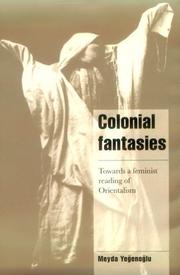
ISBN: 052148233X 0521626587 9780521482332 9780521626583 9780511583445 0511583443 0511005652 9780511005657 Year: 1999 Publisher: Cambridge Cambridge university press
Abstract | Keywords | Export | Availability | Bookmark
 Loading...
Loading...Choose an application
- Reference Manager
- EndNote
- RefWorks (Direct export to RefWorks)
In this 1998 book, Meyda Yegenoglu investigates the intersection between post-colonial and feminist criticism, focusing on the Western fascination with the veiled women of the Orient. She examines the veil as a site of fantasy and of nationalist ideologies and discourses of gender identity, analyzing travel literature, anthropological and literary texts to reveal the hegemonic, colonial identity of the desire to penetrate the veiled surface of 'otherness'. Representations of cultural difference and sexual difference are shown to be inextricably linked, and the figure of the Oriental woman to have functioned as the veiled interior of Western identity.
East and West in literature --- Exoticism in literature --- Feminist literary criticism --- #SBIB:39A5 --- #SBIB:39A8 --- Literary criticism, Feminist --- Feminism and literature --- Feminist criticism --- Kunst, habitat, materiële cultuur en ontspanning --- Antropologie: linguïstiek, audiovisuele cultuur, antropologie van media en representatie --- Social Sciences --- Sociology --- Feminist literary criticism. --- East and West in literature. --- Exoticism in literature.
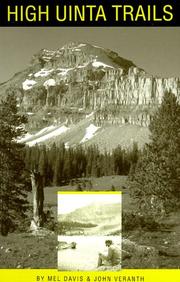
ISBN: 0585123993 9780585123998 9780874806328 0874806321 9780874806335 087480633X 0874806070 9780874806076 0874806089 9780874806083 Year: 1999
Abstract | Keywords | Export | Availability | Bookmark
 Loading...
Loading...Choose an application
- Reference Manager
- EndNote
- RefWorks (Direct export to RefWorks)
With firm roots in antiquarianism, archaeology began as the study and collection of things. Even today objects take center stage in many areas of archaeological inquiry. But the past few decades have seen a proliferation of the ways anthropological archaeologists analyze raw materials, tools, techniques, finished products, and discarded objects. Material Meanings examines current approaches to material culture in the archaeological record from three perspectives: ethnoarchaeology and technological traditions; materials science; and theoretical approaches to materiality. The focus of this book is not on artifacts themselves but on the social context in which things are produced and in which they are given meaning; the technical choices of an artifact producer within a larger technical system; and their interpretation by modern researchers. The chapters represent a broad range of theoretical perspectives, methods, and data sets. Several chapters consider methodological issues in reconstructing technical systems. Most contributions, however, apply this understanding to larger questions of social identity and ethnicity, emphasizing historical context or models of cultural process.
Ceramics --- Ethnoarchaeology. --- Material culture. --- Social archaeology. --- Analysis. --- 15.30 archaeology: general. --- Archéologie sociale. --- Arqueologia social. --- Cerâmica (análise). --- Cultura material. --- Culture matérielle. --- Céramique industrielle --- Ethnoarchéologie. --- Etnoarcheologie. --- Etnoarqueologia. --- Keramiek. --- Materiële cultuur. --- Analyse. --- Ethnoarchaeology --- Social Archaeology --- Material Culture --- Ceramic Materials --- Social Science --- Technology & Engineering
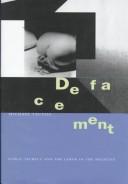
ISBN: 0804732000 9780804732000 Year: 1999 Publisher: Stanford Stanford university press
Abstract | Keywords | Export | Availability | Bookmark
 Loading...
Loading...Choose an application
- Reference Manager
- EndNote
- RefWorks (Direct export to RefWorks)
Defacement asks what happens when something precious is despoiled. It begins with the notion that such activity is attractive in its very repulsion, and that it creates something sacred even in the most secular of societies and circumstances. In specifying the human face as the ideal type for thinking through such violation, this book raises the issue of secrecy as the depth that seems to surface with the tearing of surface. This surfacing is made all the more subtle and ingenious, not to mention everyday, by the deliberately partial exposures involved in the public secret defined as what is generally known but, for one reason or another, cannot easily be articulated. Arguing that this sort of knowledge (knowing what not to know) is the most powerful form of social knowledge, Taussig works with ideas and motifs from Nietzsche, William Burroughs, Elias Canetti, Georges Bataille, and the ethnography of unmasking in so-called primitive societies in order to extend his earlier work on mimesis and transgression. Underlying his concern with defacement and the public secret is the search for a mode of truth telling that unmasks, but only to reenchant, thereby underlining Walter Benjamin s notion that truth is not a matter of exposure of the secret, but a revelation that does justice to it
Ethnology --- Secrecy --- #SBIB:39A9 --- Concealment --- Privacy --- Hiding places --- Philosophy --- Medische antropologie / gezondheid / handicaps --- #SBIB:39A5 --- #SBIB:39A3 --- #SBIB:1H30 --- Kunst, habitat, materiële cultuur en ontspanning --- Antropologie: geschiedenis, theorie, wetenschap (incl. grondleggers van de antropologie als wetenschap) --- Filosofie van de mens, wijsgerige antropologie
| Listing 1 - 10 of 15 | << page >> |
Sort by
|

 Search
Search Feedback
Feedback About UniCat
About UniCat  Help
Help News
News